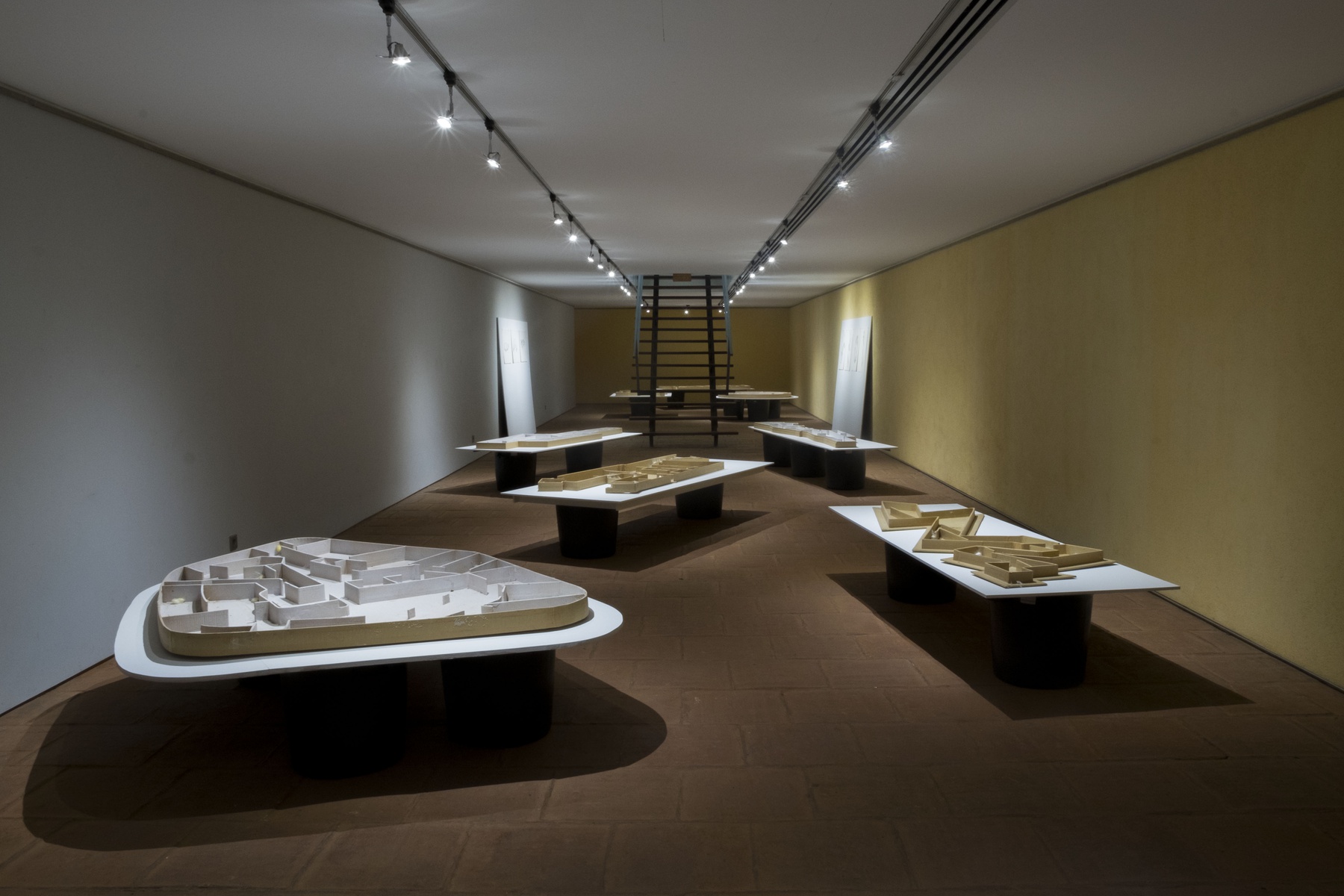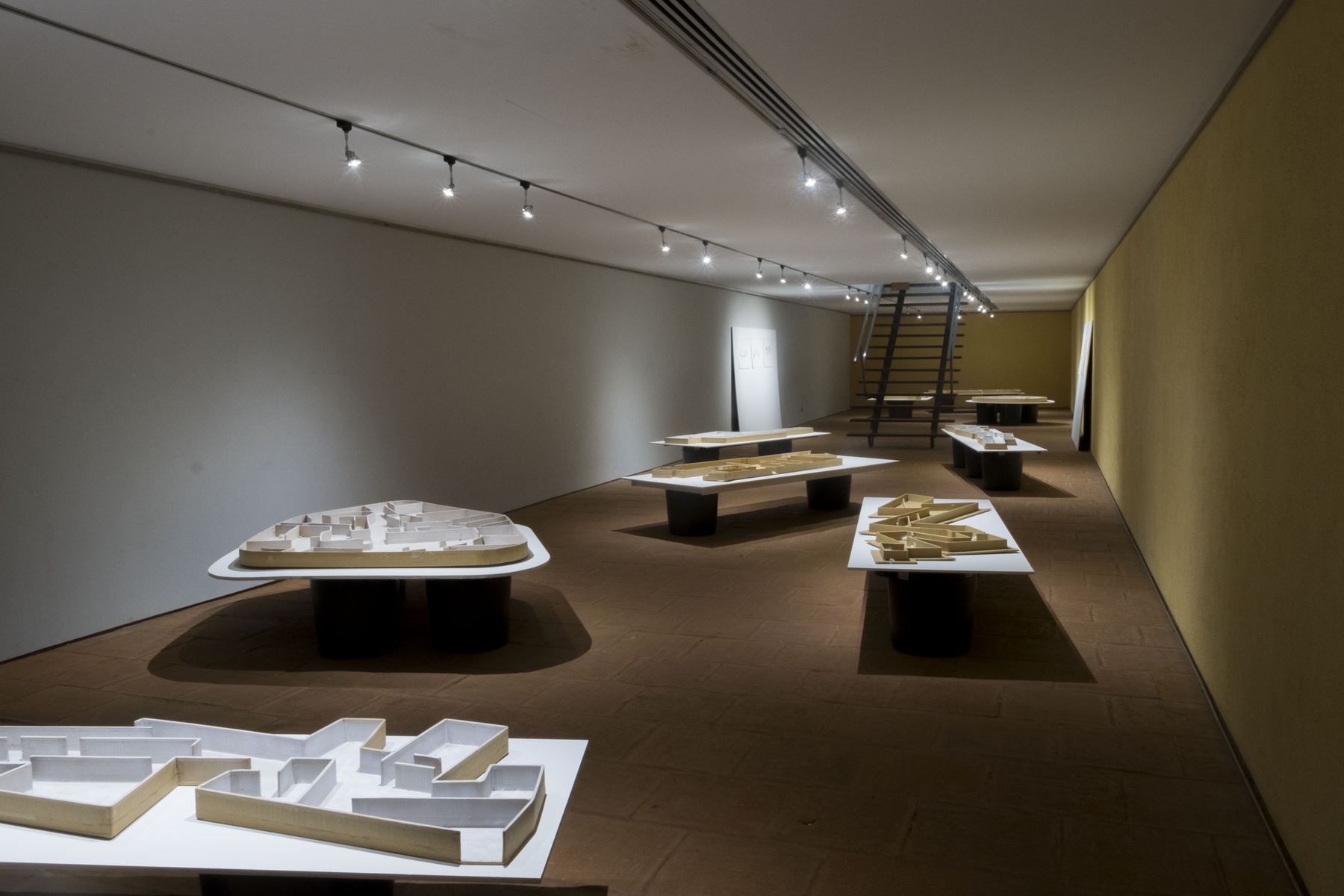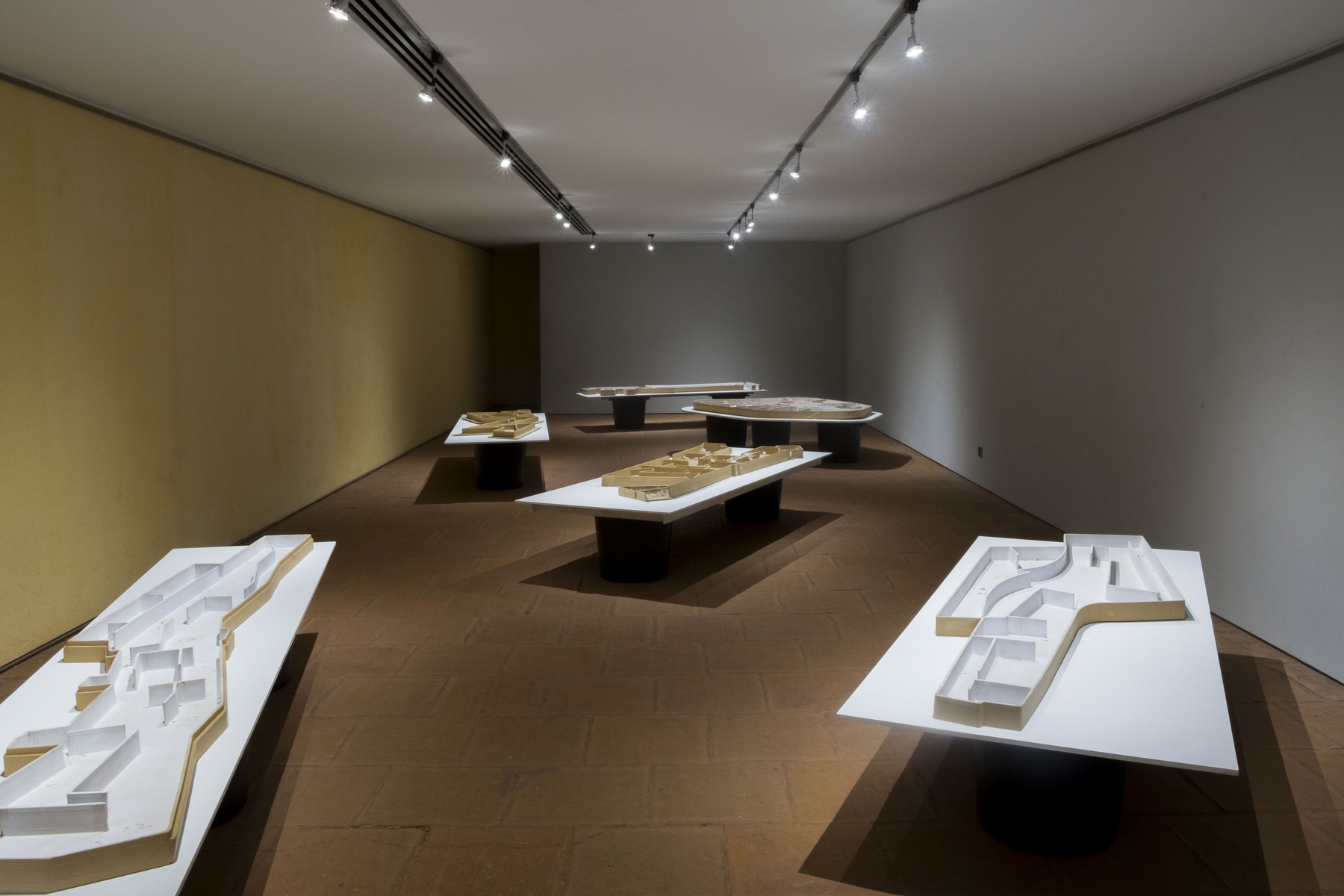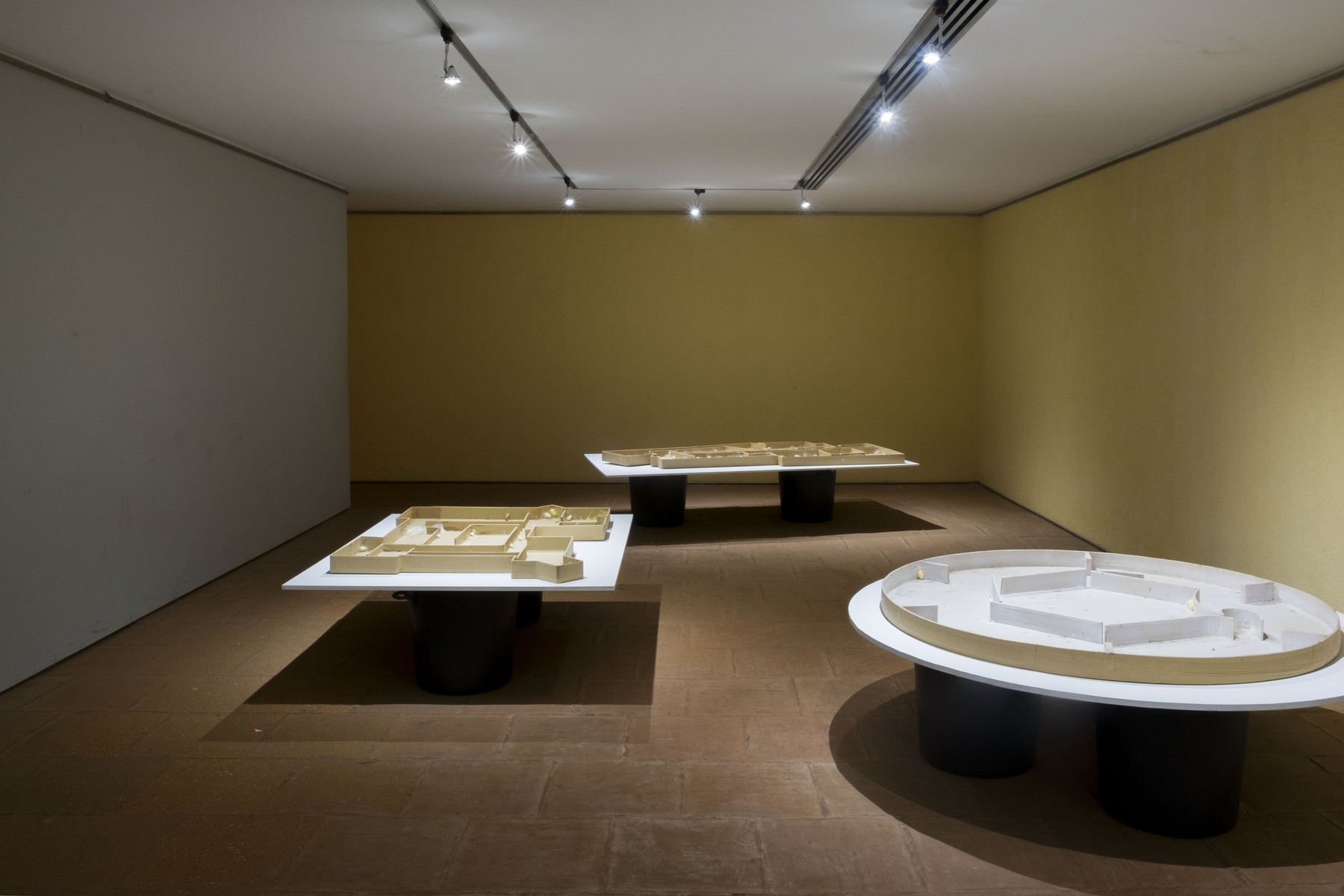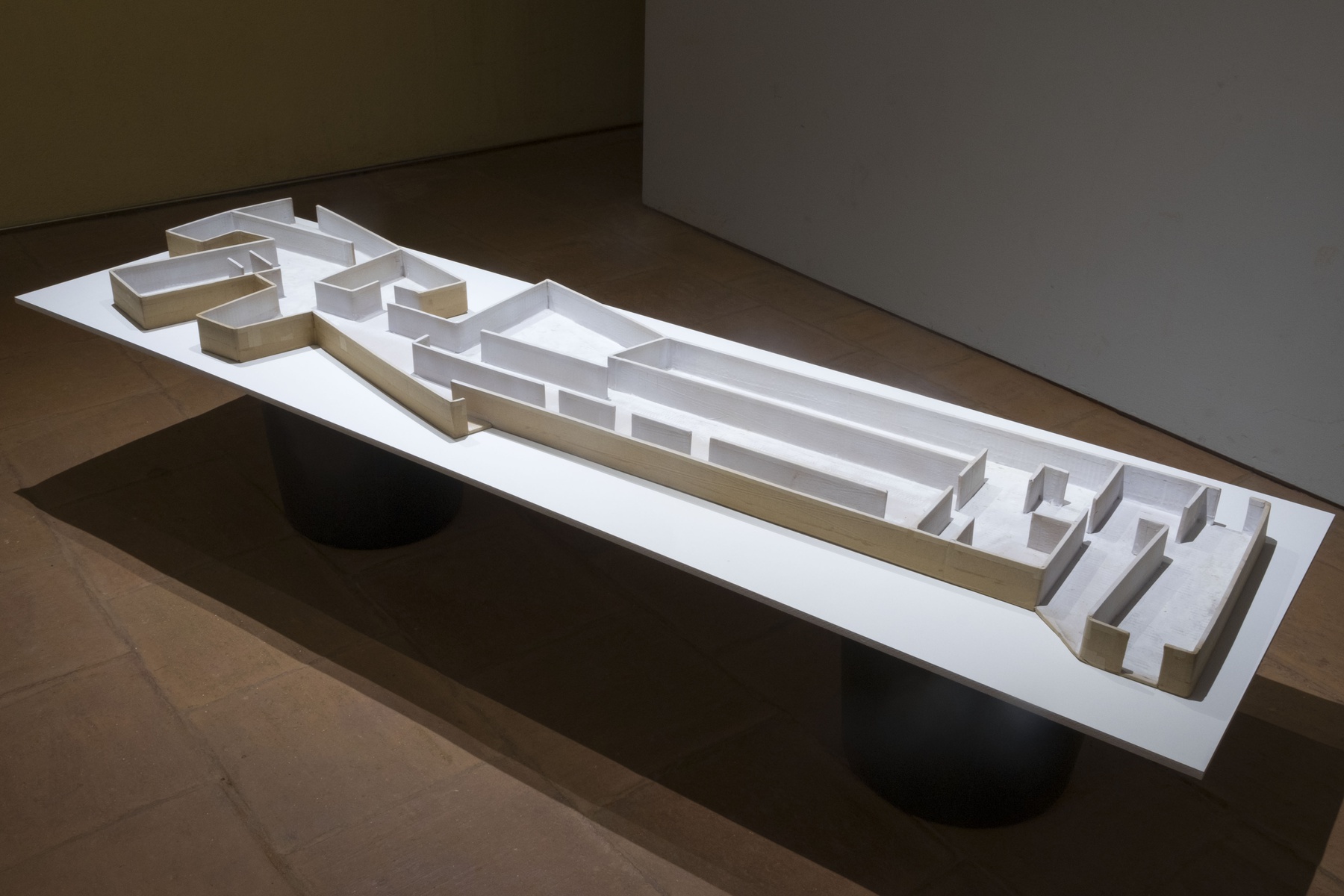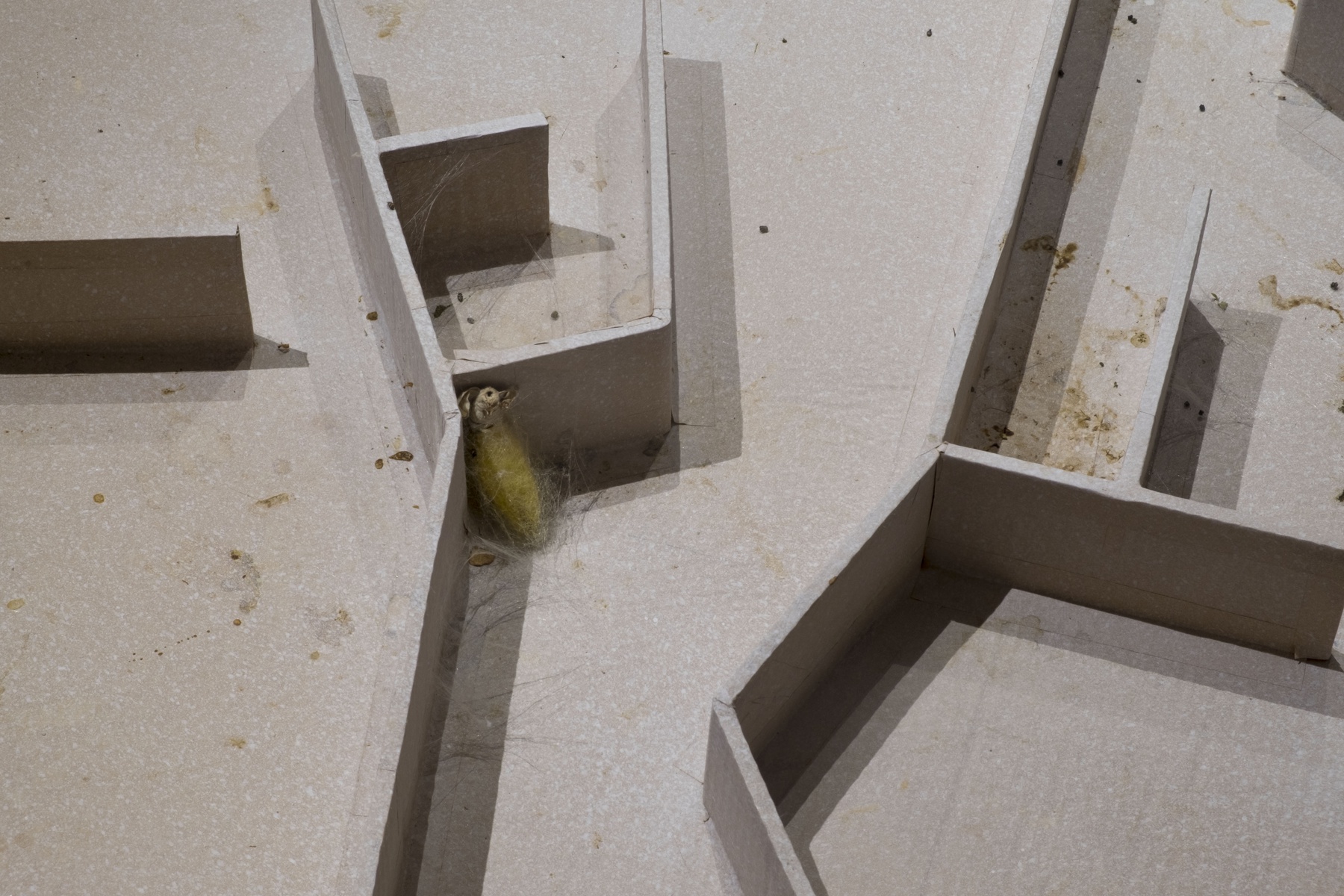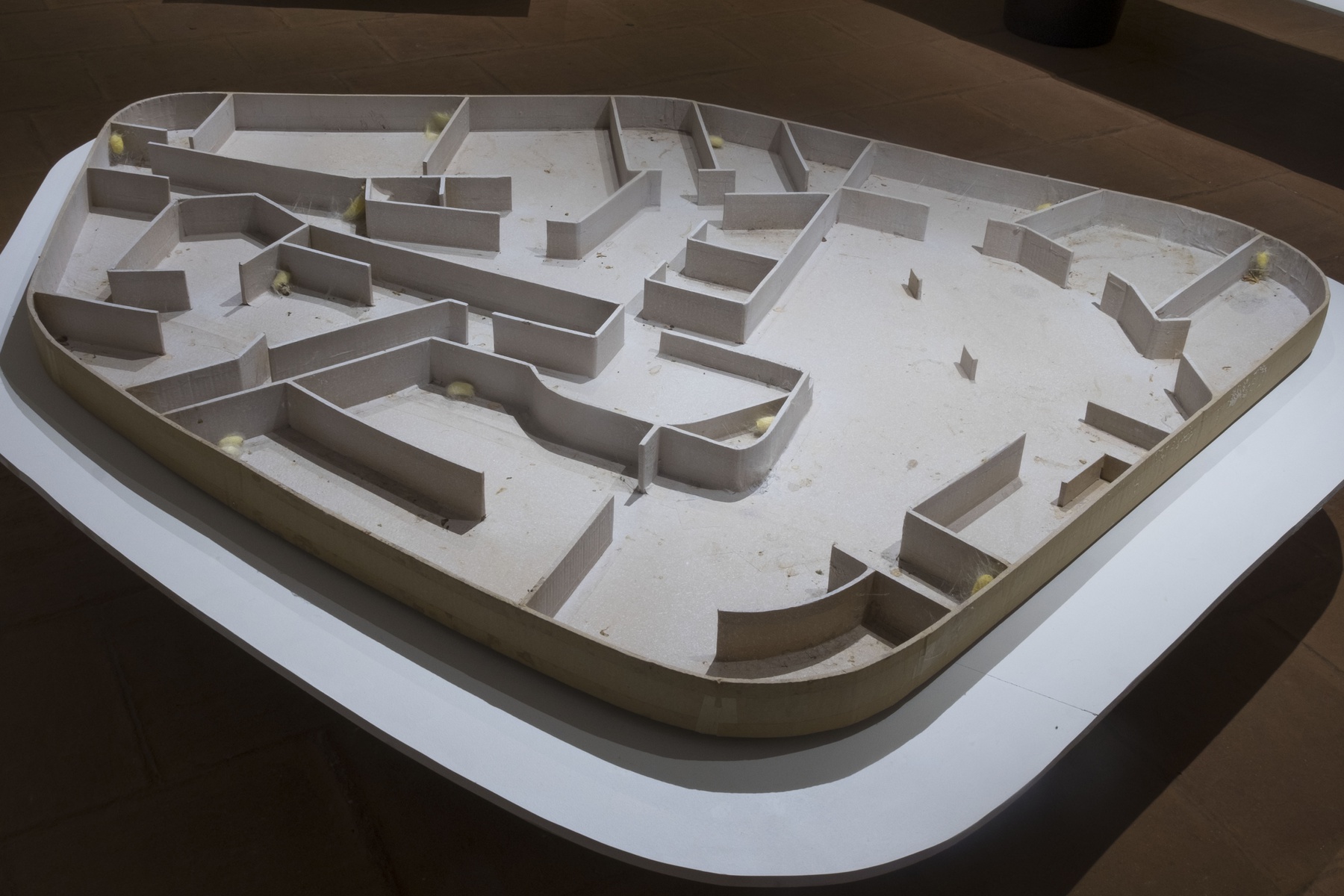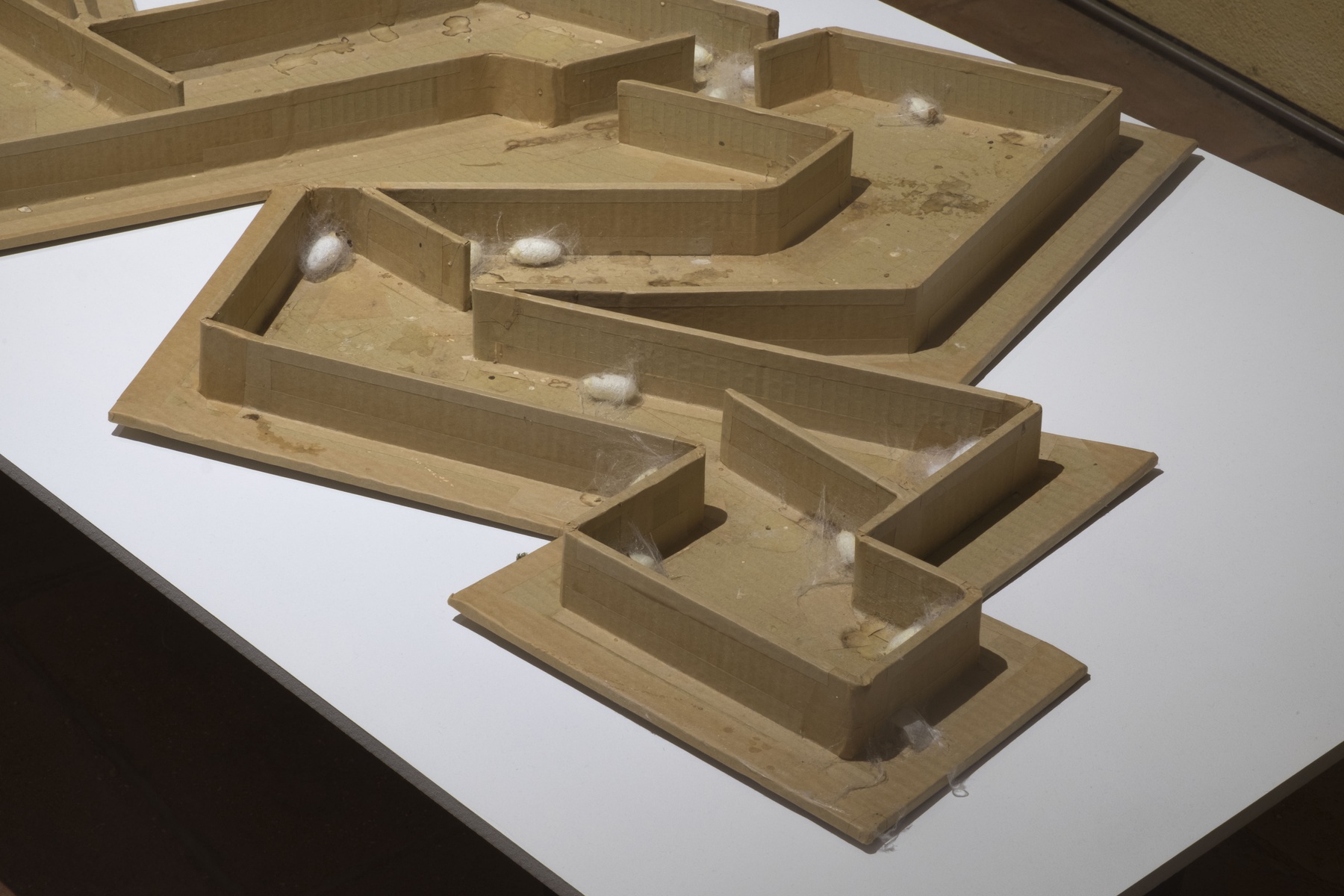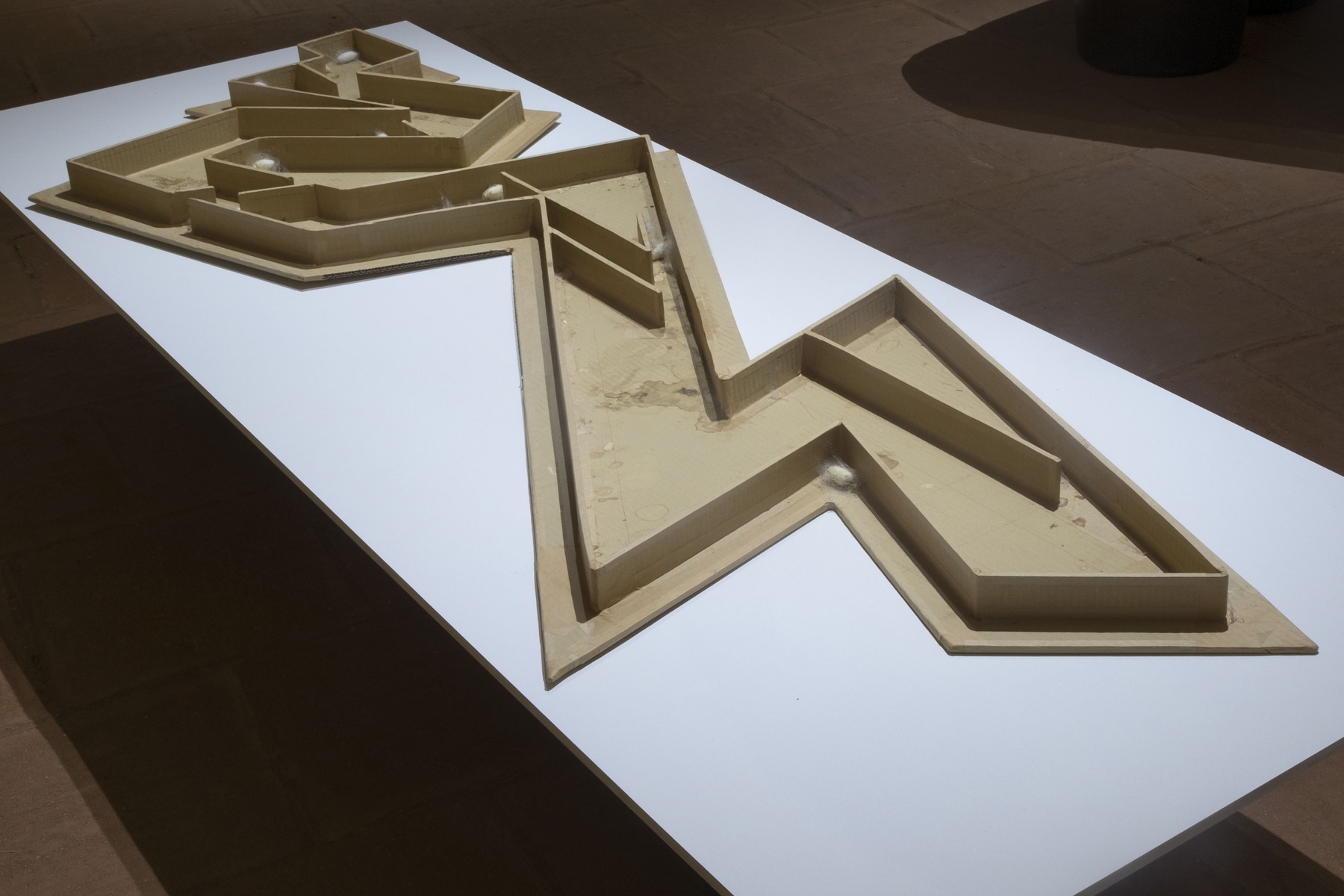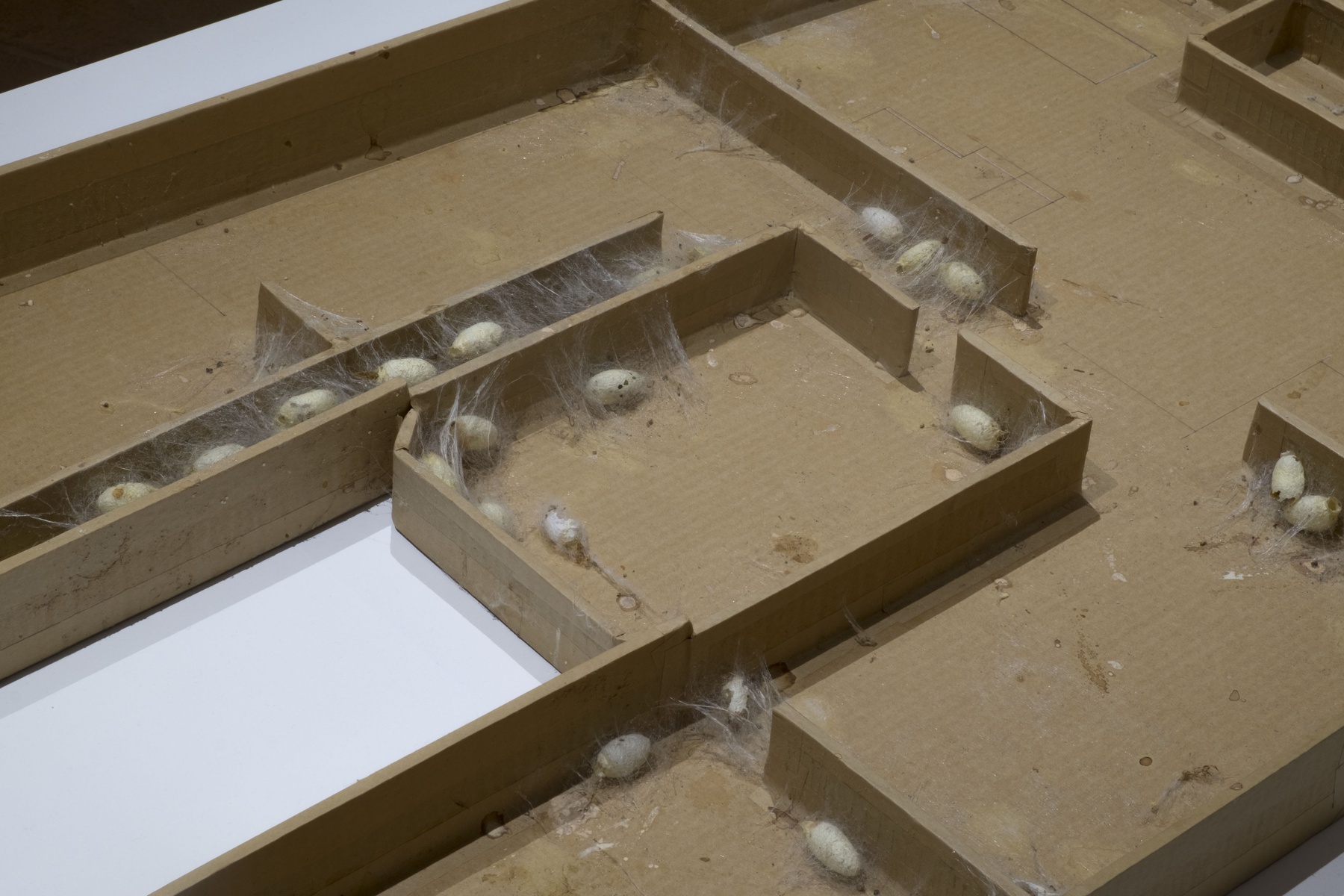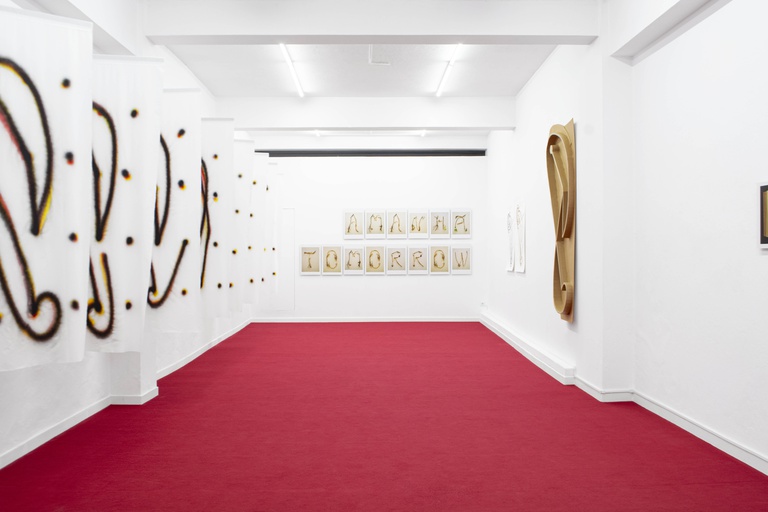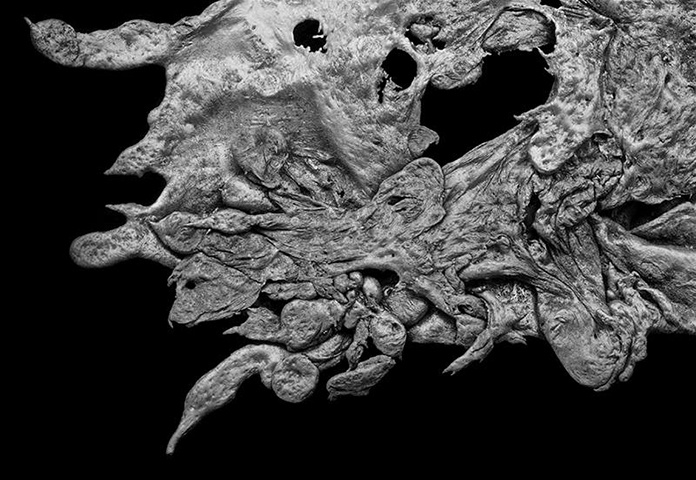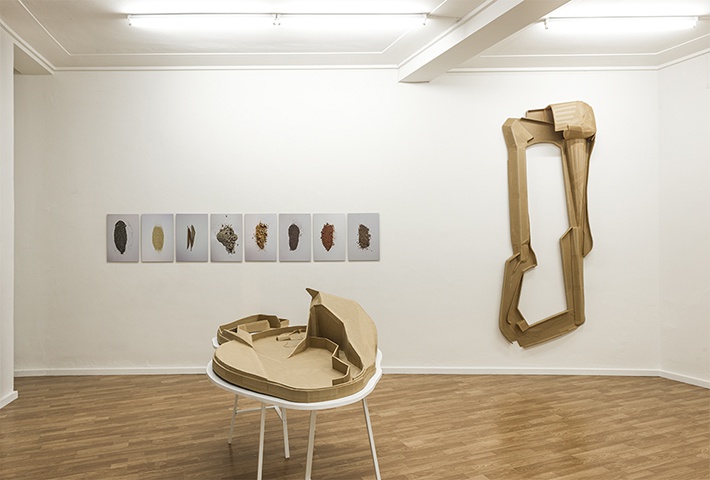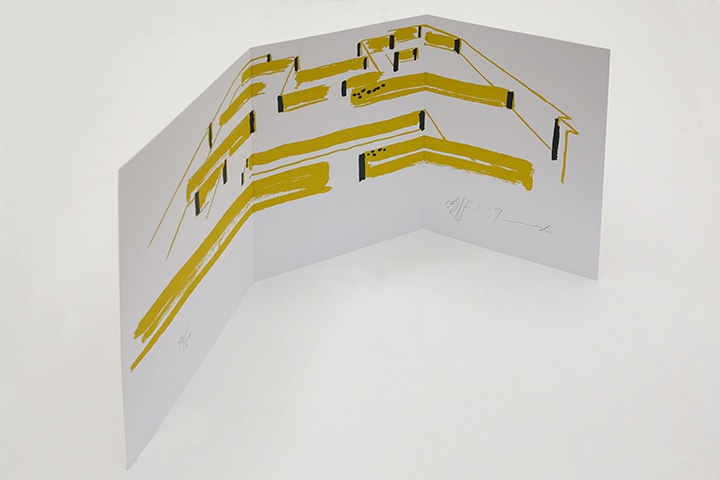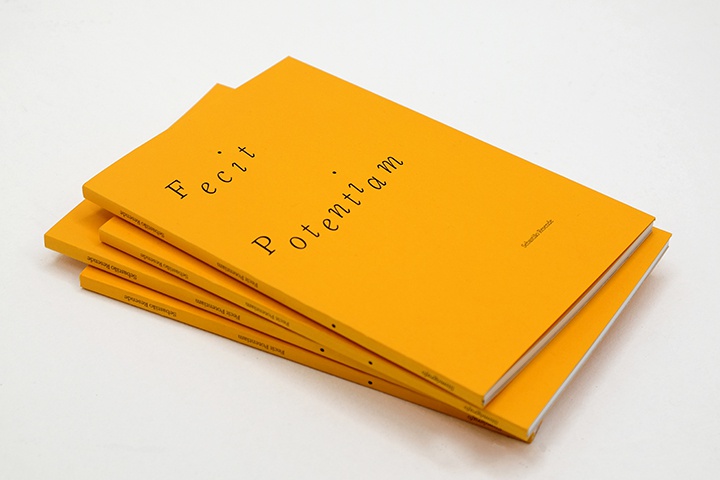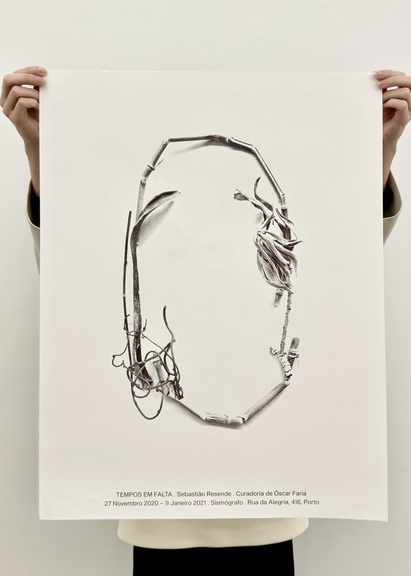When they were extinguished the space became empty
Exhibition, Outside
9 Mar – 15 Apr 2019
Opening:
Saturday, 9 March 2019, 15:00
Free admission
Casa das Artes - Rua Ruben A, 210 Porto
Metaphors of extinction
Óscar Faria
There is nothing better than an exhibition whose main characters are silkworms and white mulberry leaves to open a cycle entitled “Animalities and other botanies”, organized by Sismógrafo. Considering that silkworms can´t survive without mulberry leaves, a dependence relationship between the animal and the tree is created. It is believed that this situation was artificially created by man, a domestication through which he obtains a fine and valuable thread, that has been for centuries protagonist of several routes between the east and the west.
In the present case, this history has another derivation, for this is a project by Sebastião Resende, launched in 2004, that has now come to an end. The artist has decided to build a series of models of museological spaces and made them the home of silkworms. This was the way chosen to follow all the process of reproduction and metamorphosis of the egg into cocoon, of the worm up until the moth, “bombyx mori”, in other words, the mulberry silkworm.
It was a long process from which resulted a vast series of works that, in addition to the models, includes photographs, videos, sound works, drawings and also the publication “Fecit Potentiam”, by which we tried to continue with the first public presentation of the project, at Sismógrafo, Oporto, in 2014. The silkworm cycle occurs over a period of a month and a half. Unable to fly, the life of “bombyx mori”, that while moth fails to feed herself, seeking only to lay eggs in order to ensure the survival of the species, is a short one.
At Casa das Artes, we decided to present all models carried out in the scope of this project, nine in total, a decision in which interfered the fact that this space was projected by Eduardo Souto Moura. These works by Sebastião Resende may be understood as hybrid objects, mutants, that summon up not only several arts -sculpture, painting, architecture-, but also a series of reflections related either with the museum’s ruin or with the extinction of species, thus forming a chiasm, an intersection of terms that put us before the current cultural and environmental crisis, the two sides of the same coin.
The first model, publicly presented in 2014, was the model of Serralves Museum of Contemporary Art, in Oporto. The utopian idea of the museological space as repository of works, which prolong their existence in confrontation with the public, fostering his critical abilities, has been progressively abandoned in favor of another perspective, particularly the one associated with creative industries and economic policies. Even then, five years ago, when we looked at the result of the passage of the silkworm through Sebastião Resende’s object, we couldn’t fail to see it as a tomb with the traces of its inhabitants, with the remains of a disaster: ecological, cultural, political.
The idea of “ruin” grew strong in the remaining models, built in the meantime. Besides, now, when we see them together, the models appear as a kind of spaceship, one that carries with it the desire for a radical mutation of the present state of planet earth. Therefore, in these mazes built in cardboard and tape there is a will to find an exit, here or in another constellation, where species and arts are to be defended from those who only see profit before their eyes. Domesticated silkworms demand to return to wildness, to their savage nature, for, when they are raised under sericulture, the larvae meet their death inside their cocoons without completing metamorphosis, without ever becoming butterflies.
A series of drawings completes the exhibition “When they were extinguished the space became empty”- a title that paraphrases a poem by José Tolentino Mendonça-, seeking, in this case, the preservation of memory, the evocation of those moments that marked the work process: from the larvae that died before concluding their transformation process to the remnants of mulberry leaves after they have been eaten by the silkworm.
Therefore, the cycle “Animalities and other botanies” aims to bring to the forefront a reflection on how art has been creating new spaces for the discussion, for the dialogue between nature and culture, for this encounter between species, including in this proposal, among others, the ideas of Donna Haraway, Timothy Morton, Bruno Latour, Paul B. Preciado, Edward Osborne Wilson, Thoreau, and the poets W. S. Merwin e Gary Snyder and his “deep ecology”, who wrote in his book The Practice of the Wild: “Thoreau says ‘give me a wildness no civilization can endure’. That's clearly not difficult to find. It is harder to imagine a civilization that wildness can endure, yet this is just what we must try to do. Wildness is not just the "preservation of the world," it is the world. Civilizations east and west have long been on a collision course with wild nature, and now the developed nations in particular have the witless power to destroy not only individual creatures but whole species, whole processes, of the earth. We need a civilization that can live fully and creatively together with wildness” (San Francisco, North Point Press, 1990, p. 6).
ANIMALITIES AND OTHER BOTANIES
Cycle of exhibitions
Th e cycle “Animalities and other botanies” aims to bring to the forefront a reflection on how art has been creating new spaces for the discussion, for the dialogue between nature and culture, for the encounter between species, including in this proposal, among others, the ideas of Donna Haraway, Timothy Morton, Bruno Latour, Paul B. Preciado, Edward Osborne Wilson, Henry David Thoreau, and the poets W.S. Merwin and Gary Snyder and his “deep ecology”, who wrote in his book The Practice of the Wild: “Thoreau says ‘give me a wildness no civilization can endure’. That’s clearly not difficult to find. It is harder to imagine a civilization that wildness can endure, yet this is just what we must try to do. Wildness is not just the ‘preservation of the world’, it is the world. Civilizations east and west have long been on a collision course with wild nature, and now the developed nations in particular have the witless power to destroy not only individual creatures but whole species, whole processes, of the earth. We need a civilization that can live fully and creatively together with wildness.”
Sebastião Resende has been active in different mediums since 76 , namely in sculpture, photography, drawing painting and silkscreen, having received several prizes in the national and international context, being the most recent the Amadeo de Souza-Cardoso Prize. He has presented 27 solo exhibitions, being the most recent ones:
“Sobre a Terra Fendida Uma Chama”, Museu da Guarda (2018), “Neste Ninho de Vespas”, Sismógrafo, Porto (2017), “Fecit Potentiam”, Sismógrafo, Porto (2014), “Sem Retorno”, Museu da Luz, Mourão (2012), “The Lying Chair”, Galeria Quadrado Azul, Lisboa (2012), “Naufrágio Pluma”, Galeria Quadrado Azul, Porto (2009), “Tem nos Olhos o Tempo Simultâneo” (2007), O Espaço do Tempo, Montemor-o-Novo, “Sem Título Tranquilo III” Galeria Quadrado Azul, Porto (2003).
Exhibition, Outside
9 Mar – 15 Apr 2019
Opening:
Saturday, 9 March 2019, 15:00
Free admission
Casa das Artes - Rua Ruben A, 210 Porto

